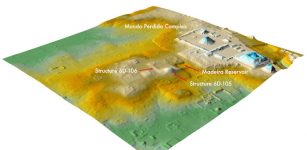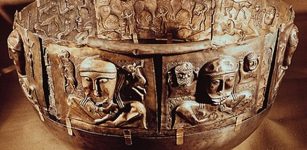Recreation Of Cleopatra’s Ancient Perfume
Conny Waters - AncientPages.com - Researchers have recreated Cleopatra’s ancient perfume, which will be showcased in a National Geographic exhibit.
The ancient Egyptian city Thmuis (Tell Timai) in the Nile Delta was the home to the most famous perfumes of antiquity, Mendesian and Metopian.
In the first phase of the Tell Timai Project, evidence was uncovered of this ancient fragrance industry, according to College of Languages, Linguistics & Literature Professor Robert Littman and adjunct professor Jay Silverstein, and their project.
A vast complex of third century BCE (Before the Common Era) kilns was discovered. Chemical analysis established that the kilns used imported clays to manufacture fine lekythoi or perfume bottles. In a later Roman occupation, a glass manufacturing kiln was analyzed that may represent the transition from ceramic to the unguentaria or small glass perfume jars used in the Roman period.
See also:
Deadly Ancient Secrets Of Queen Hatshepsut’s Flacon
Ancient Egyptian Cosmetics – Why Was It So Important To Both Men And Women?
Giulia Tofana Poisoned 600 Men – Beautiful Sicilian Woman And Her Deadly Mission
In 2012, a manufacturing area for some sort of liquid was uncovered with an adjacent hoard of silver coins and gold and silver jewelry near the kilns suggesting that, possibly, the house of a perfume merchant had been uncovered.
 Perfume factory at Tell Timai. Credit: Tell Timai Excavation Project
Perfume factory at Tell Timai. Credit: Tell Timai Excavation Project
Currently, residue analysis of the contents of some of the amphora, a tall ancient Greek or Roman jar with two handles and a narrow neck, found in the manufacturing area are being conducted to see if there may be identifiable traces of the liquids produced there.
Littman and Silverstein then approached German researchers Dora Goldsmith and Sean Coughlin, experts on ancient Egyptian perfume, to recreate the perfume of Thmuis, based on formulas in ancient Greek texts.
“What a thrill it is to smell a perfume that no one has smelled for 2,000 years and one which Cleopatra might have worn,” Littman said in a press release.
These studies of Mendesian perfume have now come together in Washington, D.C. The National Geographic Society opened a new and innovative exhibition on the “Queens of Egypt” that incorporates cutting edge research, virtual reality experience, and the fragrances of the Queens of Egypt.
See also: More Archaeology News
The work of Littman and Silverstein and the fragrances of Goldsmith and Coughlin are featured in the National Geographic Museum exhibit in Washington, D.C., which runs through September 15.
Written by Conny Waters - AncientPages.com Staff Writer





















